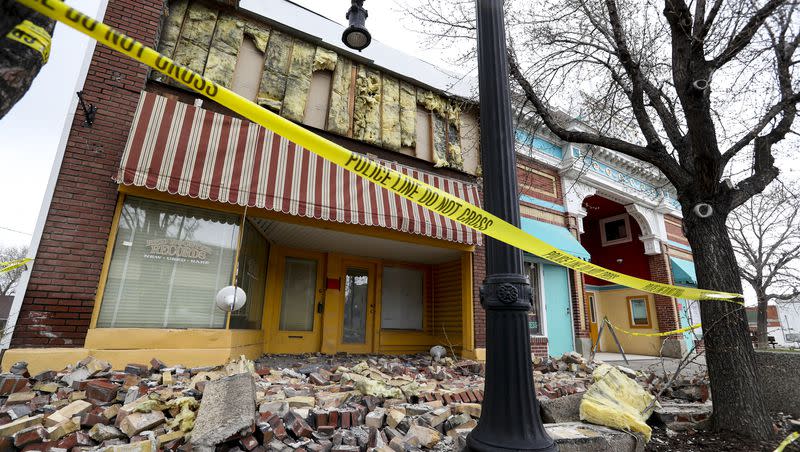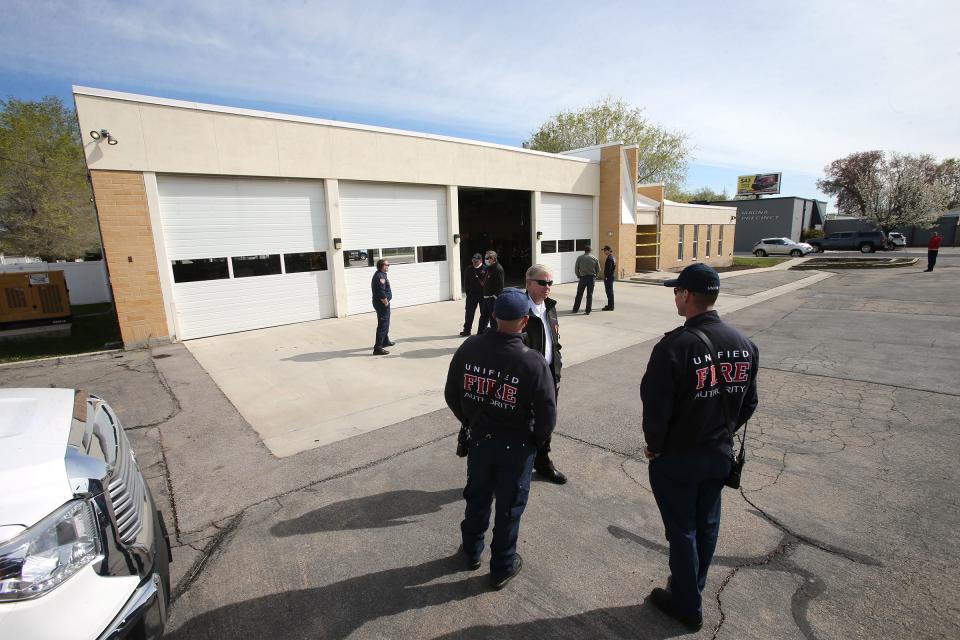What would happen if the ‘big one’ shook Utah? $80 billion in losses

Utah does not have an early earthquake warning detection system, even though 80% of Utah’s 2.9 million residents live within 15 miles of its most geologically active fault — the Wasatch.
In a recent presentation to members of the Natural Resources, Agriculture and Environment Interim Committee, the executive director of the Utah Geological Survey told members the state is ripe for such an investment, given it is most at risk for getting the “big one” — second only to the West Coast.
The results of a magnitude 7.0 earthquake along the Wasatch Front would be devastating in economic losses — and that’s not even counting the losses of lives. It’s estimated such a quake would have $80 billion in short-term impacts, according to numbers William Keach said were provided by the Federal Emergency Management Agency.
Related
Could ‘Big One’ in Utah be costliest natural disaster in U.S. history?
As aftershocks continue, Utah Geological Survey seeks ‘citizen scientists’ to document damage
Just how big is big?
“I wanted to give you a little context, the magnitude 5.7 earthquake that we had in Magna in 2020 March, we all remember that. If we had magnitude 6 in the valley, it’s three times stronger than that one,” Keach said. “A magnitude 6.75 is going to be 38 times that. The scale goes up with these earthquakes that (have potential) of occurring in Utah.”
According to the Utah Geological Survey, the last “big one” happened along the Nephi segment — one of five of the Wasatch — and was in Santaquin. It displaced the ground by 10 feet. According to the agency’s trench study, it measured magnitude 7 and happened 500 years ago and was felt strongly in Provo and Salt Lake City.
About 20 earthquakes a year are felt by Utah residents, with rumbles and shakes picked up by University of Utah seismic stations.
But Keach pointed out that scientific data shows the probabilities of having a magnitude 6 in the next 40 years are 57% and a magnitude 6.75 is 43%.
Public sentiment does not equal preparedness
A survey by the Utah Division of Emergency Management with 27 questions that garnered 163 responses showed 88% of people and organizations felt having an early earthquake warning detection in Utah would be valuable. This comes even as 72.7% of respondents said their organization lacked automated system controls or monitors for such an event and an even greater number — 81.7% — said there were no magnitude thresholds or activation criteria for response plans.
Related
To better “earthquake proof” Utah, Keach said it would cost:
$2 billion to replace or retrofit unreinforced masonry in 119 schools.
$260 million for the Utah State Capitol.
$260 million for the Salt Lake Latter-day Saint Temple.
$175 million for aqueduct resilience .
The Utah Legislature, based on recommendations of the Utah Seismic Safety Commission and Envision Utah, appropriated $50 million to bolster aqueducts.
Keach said that was an important first step this last year because millions of people, should a major earthquake happen, would be without potable water for three months — or maybe as long as six months.
He said after Hurricane Katrina, a half million people fled New Orleans, never to return.
The ShakeAlert early earthquake warning detection system began as a project on the West Coast in collaboration with the U.S. Geological Survey and universities in 2006. By 2019, the system was in place for California, Oregon and Washington at a cost of $200 million.
Utah could do a similar system along the Wasatch Front with telemetry upgrades, 80 new seismograph stations, and new computing infrastructure, along with related personnel.
The cost is estimated to be a one time expenditure of $4.8 million and ongoing money of $960,000.
“We’re going to leverage all the investment they made in research, and we can bring it here for under 5 million bucks. I think that’s a great deal,” Keach said.

What would the money do?
Depending on where the earthquake struck and how strong it was, Keach said it would buy valuable time — in increments of seconds.
Seconds may not sound like much, but it would give time to get the bays open on a fire station for emergency vehicles to exit, it would give natural gas pipeline operators the ability to shut off the line, for dangerous power lines to be idled or trains to slow down on rails. Correctional facilities could go in lockdown mode before the shaking began.
Keach’s presentation also emphasized that those few precious extra seconds would help save lives and the heightened awareness would allow for quicker response and recovery from an earthquake. The machine to machine interactions are key, he added.
“These are all sorts of mechanical benefits that really change the overall impact on our economy,” he said. “We can mitigate those certain kinds of impacts.”
Such a warning system allowing a scramble to potential safety would also occur via public notifications via cellphones, roadway signs, television and radio broadcasts and more.
While the $4.8 million would be directed at the Wasatch Front, another $7 million is necessary for the southern portion of the state. Keach said the lift would require an assist from federal partners and Utah’s federal delegation.
Related

